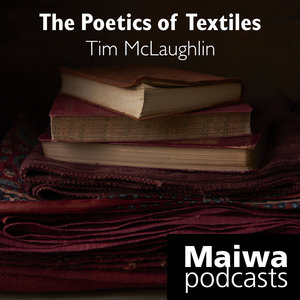The Maiwa Guide to Natural Dyes
What they are and how to use them
Lac Extract - is a red dye extract from the scale insect Laccifer lacca. Found throughout India, south east Asia, Nepal, Burma, Bhutan and south China, the insect is found both both in the wild and cultivated. The female lac insects invade host trees (mainly fig and acacia) and the insect secretes a resin that contains the red dye. The resin is harvested from the branches and is known as stick lac. There are two primary components, the resin and the dye. To be useful for dyeing the colorant is separated from the resin - it is then referred to as lac extract The resin is also used to make shellac and in the past was the main component in 78 rpm records.
Lac extract yields a range of reds from crimsons to burgundy reds to deep purples. The colourant is similar to cochineal but colours achieved are warmer, softer, and more muted. The lac dye has high light and washfastness on both silk and wool.
5-8% dye to WOF is all that is needed for a medium depth of shade. Charllotte's coat above is wool dyed with lac. The artisans who made it, the lac dyers of Bhujodi village in India were featured in Issue #6 of Hand/Eye magazine.
Mordanting: use alum mordant at 15% WOF for protein fibres. Mordant with tannin at 8% WOF and then alum at 15% for cellulose fabrics – but note that lac extract has reduced light and washfastness on cellulose fibres.
Dyeing: Use at 10-15% WOF. Dissolve extract in water and simmer with fibre for 45 minutes, leaving overnight for richest colours. This dye is very sensitive to change in pH and develops to its fullest colour potential with the addition of cream of tartar at 6% WOF. The addition of an alkali like soda ash will yield plum purples and the addition of iron will give blackened purples.
What they are and how to use them
 |
| Lac insects Laccifer lacca on a branch in Orissa, India. |
Lac Extract - is a red dye extract from the scale insect Laccifer lacca. Found throughout India, south east Asia, Nepal, Burma, Bhutan and south China, the insect is found both both in the wild and cultivated. The female lac insects invade host trees (mainly fig and acacia) and the insect secretes a resin that contains the red dye. The resin is harvested from the branches and is known as stick lac. There are two primary components, the resin and the dye. To be useful for dyeing the colorant is separated from the resin - it is then referred to as lac extract The resin is also used to make shellac and in the past was the main component in 78 rpm records.
 |
| Stick Lac still on the branch. |
 |
| Lac on wool. Dyed and woven by artisans in Bhujodi village in the Kutch Desert of India. |
5-8% dye to WOF is all that is needed for a medium depth of shade. Charllotte's coat above is wool dyed with lac. The artisans who made it, the lac dyers of Bhujodi village in India were featured in Issue #6 of Hand/Eye magazine.
Mordanting: use alum mordant at 15% WOF for protein fibres. Mordant with tannin at 8% WOF and then alum at 15% for cellulose fabrics – but note that lac extract has reduced light and washfastness on cellulose fibres.
Dyeing: Use at 10-15% WOF. Dissolve extract in water and simmer with fibre for 45 minutes, leaving overnight for richest colours. This dye is very sensitive to change in pH and develops to its fullest colour potential with the addition of cream of tartar at 6% WOF. The addition of an alkali like soda ash will yield plum purples and the addition of iron will give blackened purples.
 |
| Lac dye at 20% on a variety of fibre types. |
 |
| Lac on linen, blockprinted in a pattern of vertical stripes with iron. |















